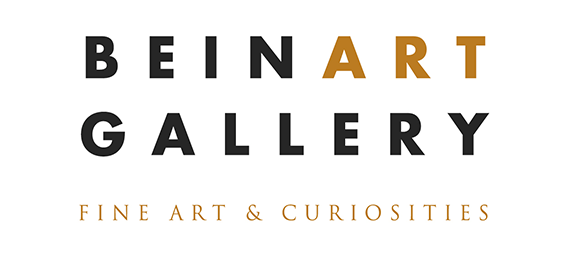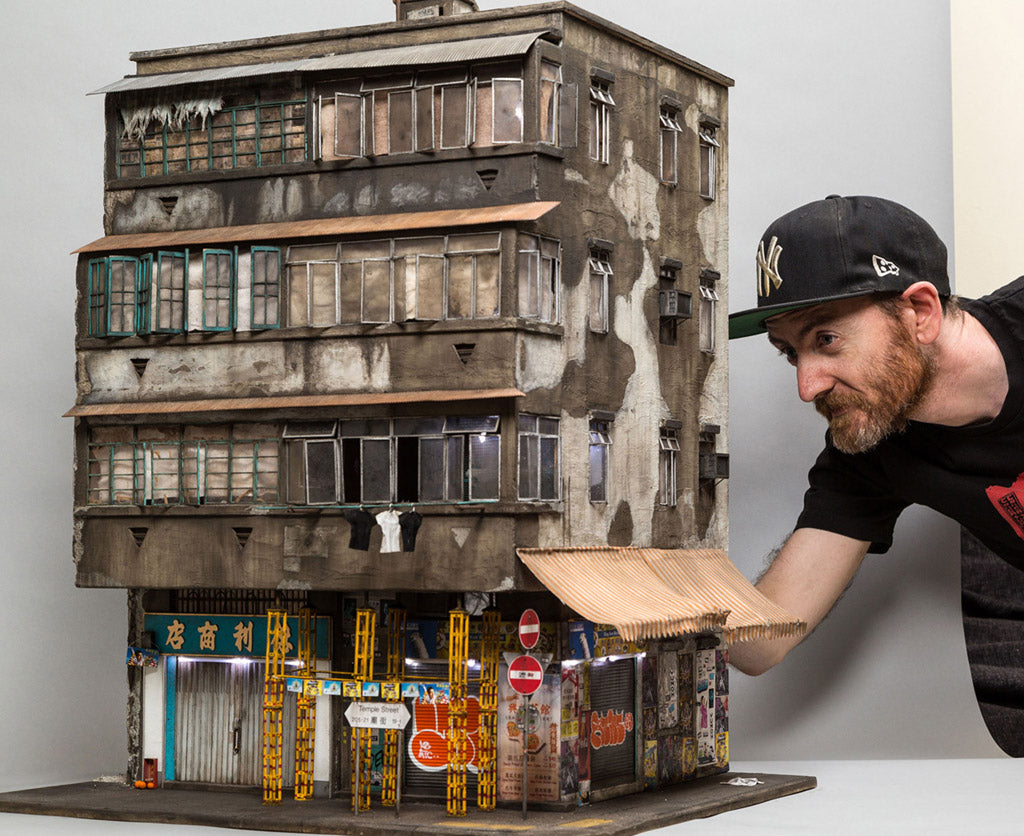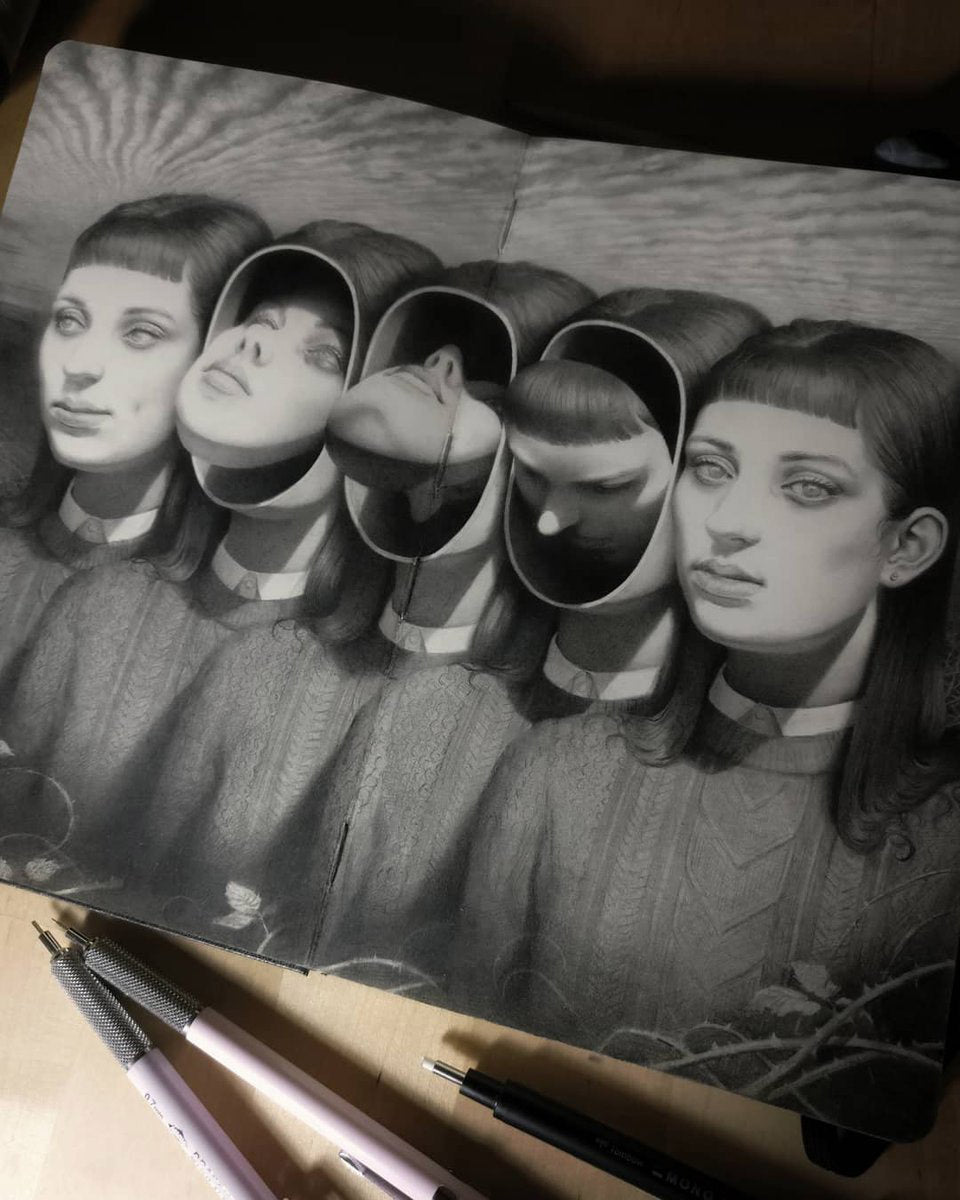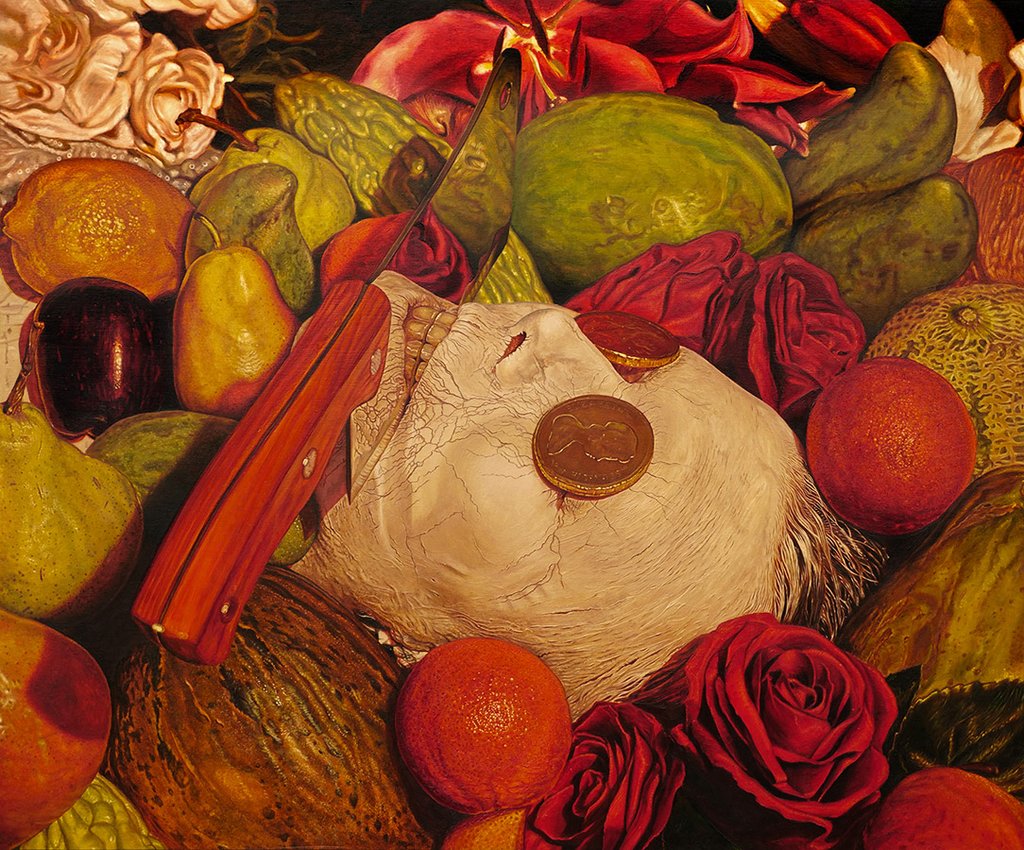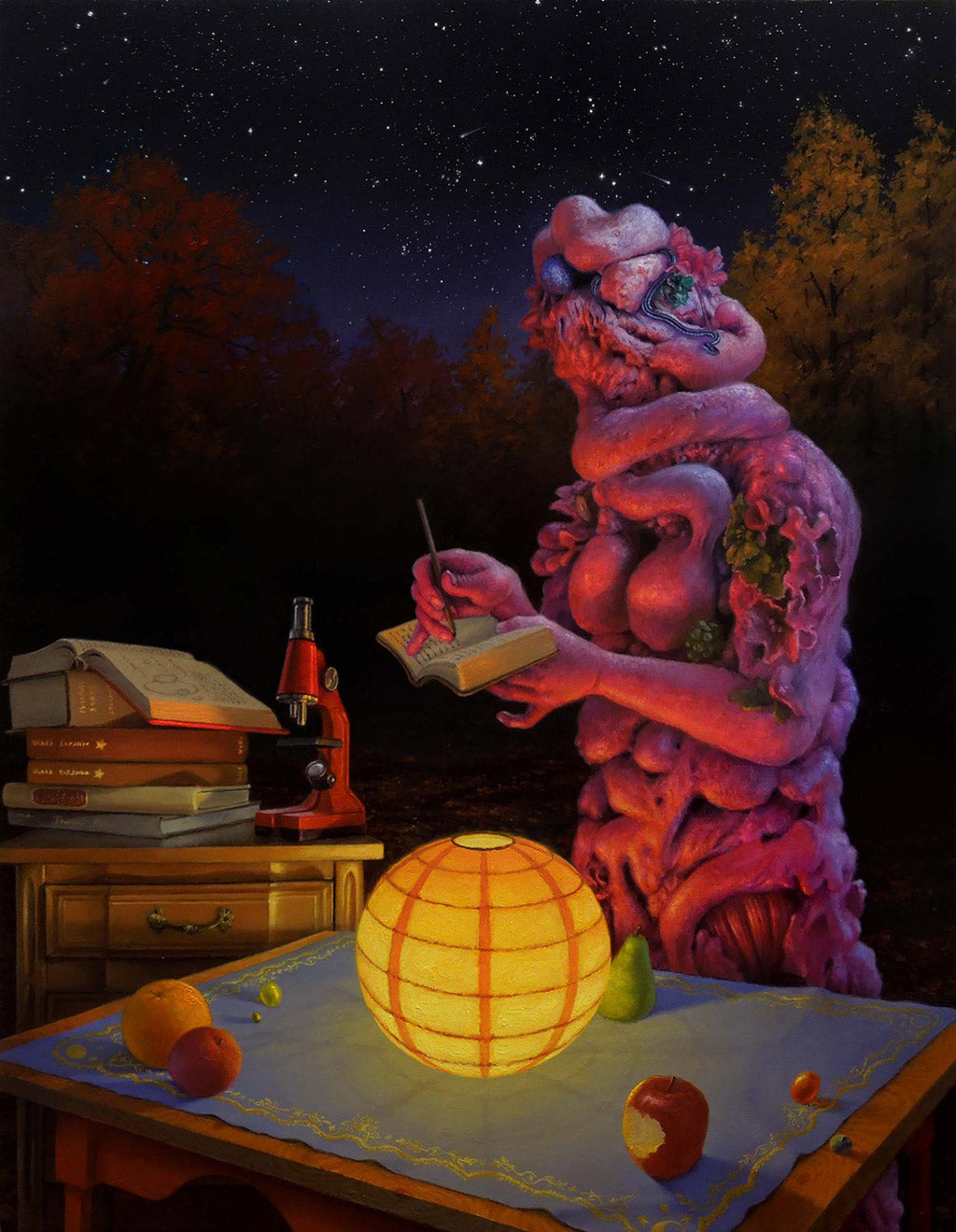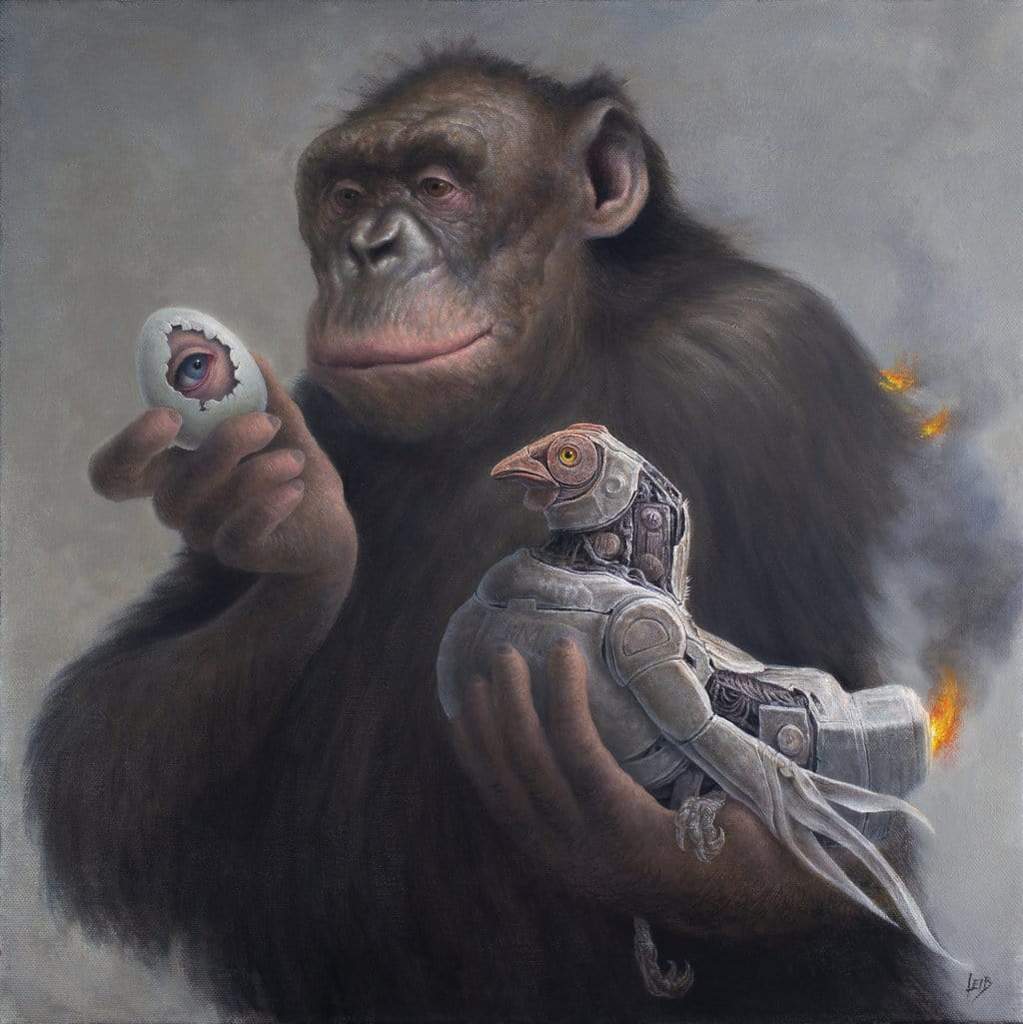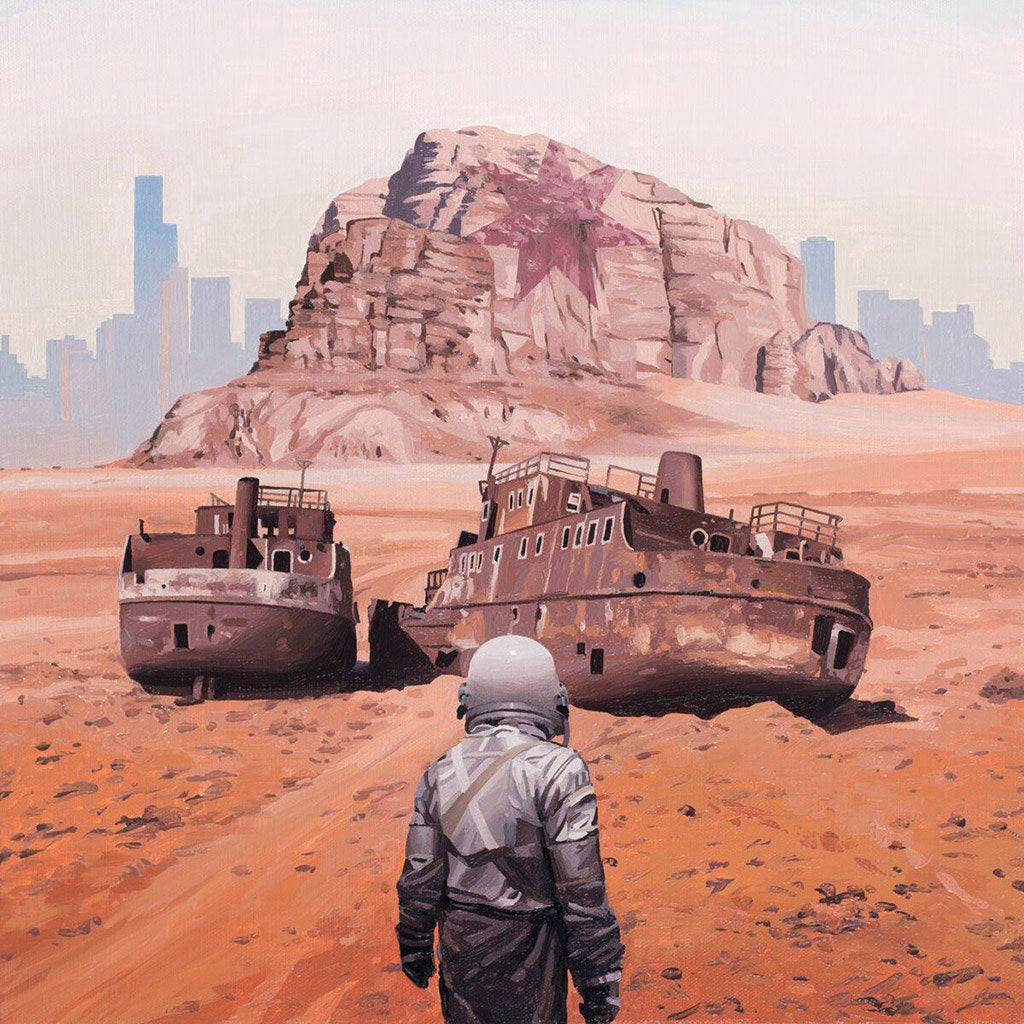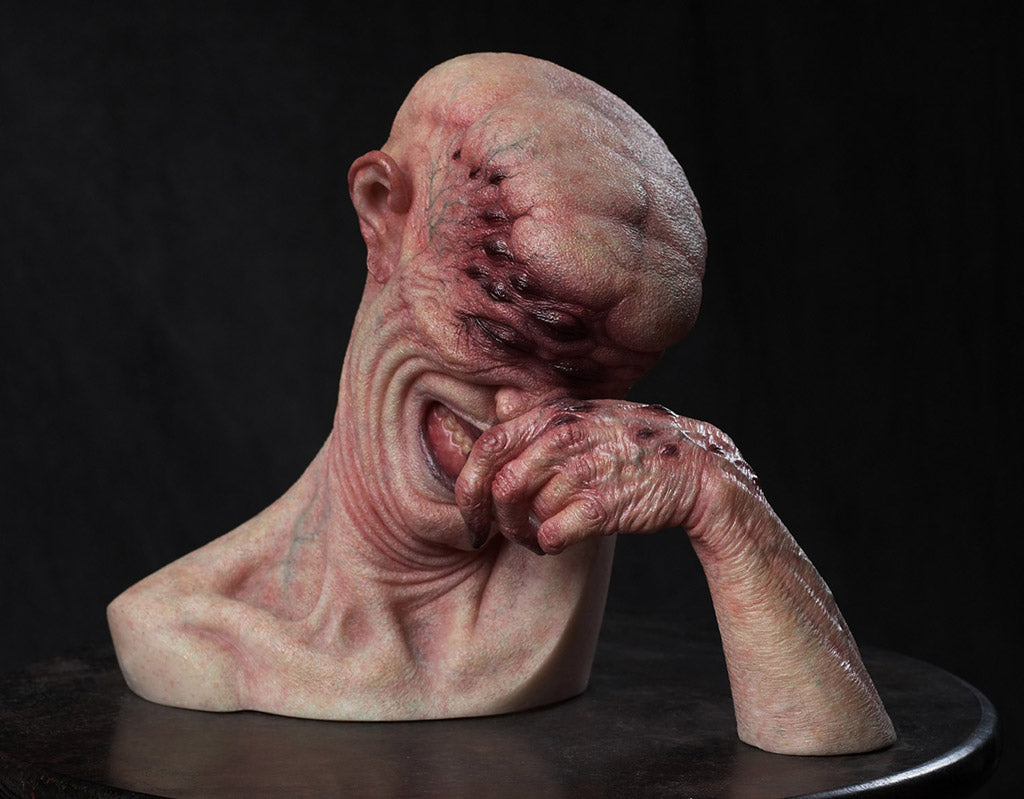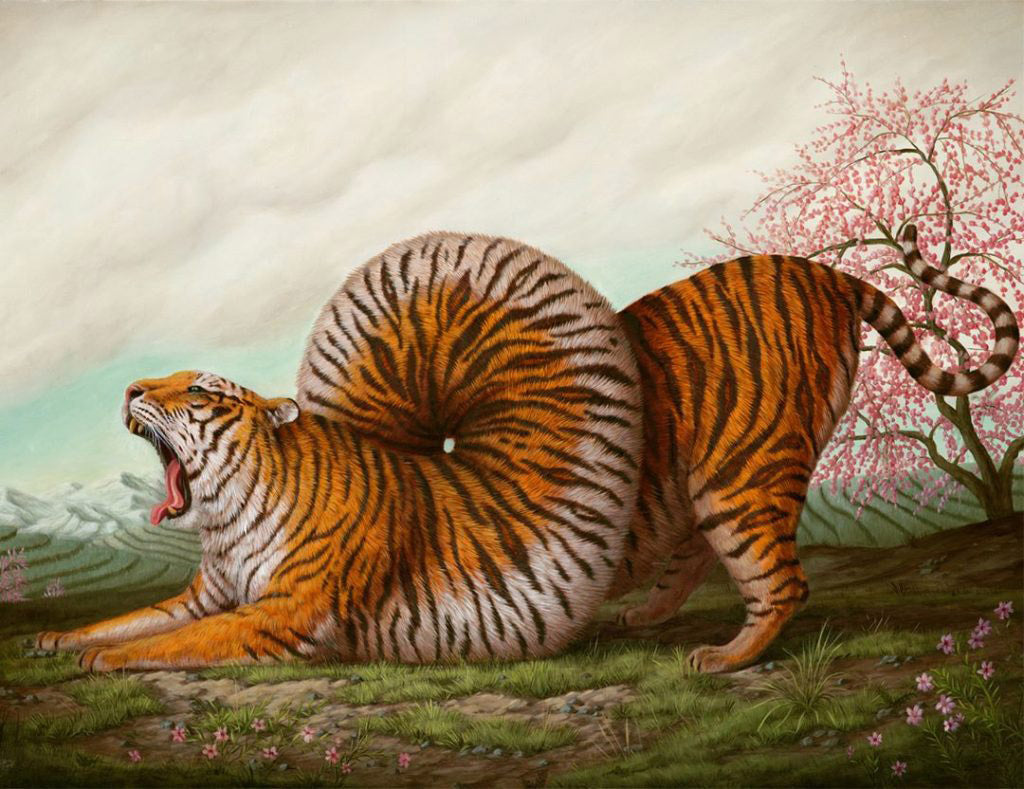
La Boucle D'or - Oil painting by Bruno Pontiroli.
For most artists, having a solid social media presence is an integral part of their promotional efforts. It’s a great way to grow a fanbase, interact with those fans, and even build up some connections with collectors. There’ve been quite a few artists who have quit their day jobs and been able to make art full-time due to the opportunities social media presented. However, no matter how many great things can be said about social media, it’s not free from issues: ever-changing algorithms, work being shared without credit, and, the one that concerns me the most, being reliant on a service that ultimately answers to their investors as opposed to their users.
Social media may evolve in new ways that make it easier for artists, or someone may step up and create a social media platform by artists for artists (fingers crossed), but for the time being, learning how to make it work for you no matter how much it feels like it works against you is the goal of this article. Hopefully the tips and tricks featured here can help you crank your social media game to 11 and not have to feel like you’re compromising too much in the process. Each section will focus on a major theme; this way, if you want to refer back to this article you can easily find the section you feel you need more help with.
This article was written by Josh G from Creep Machine in August 2019.
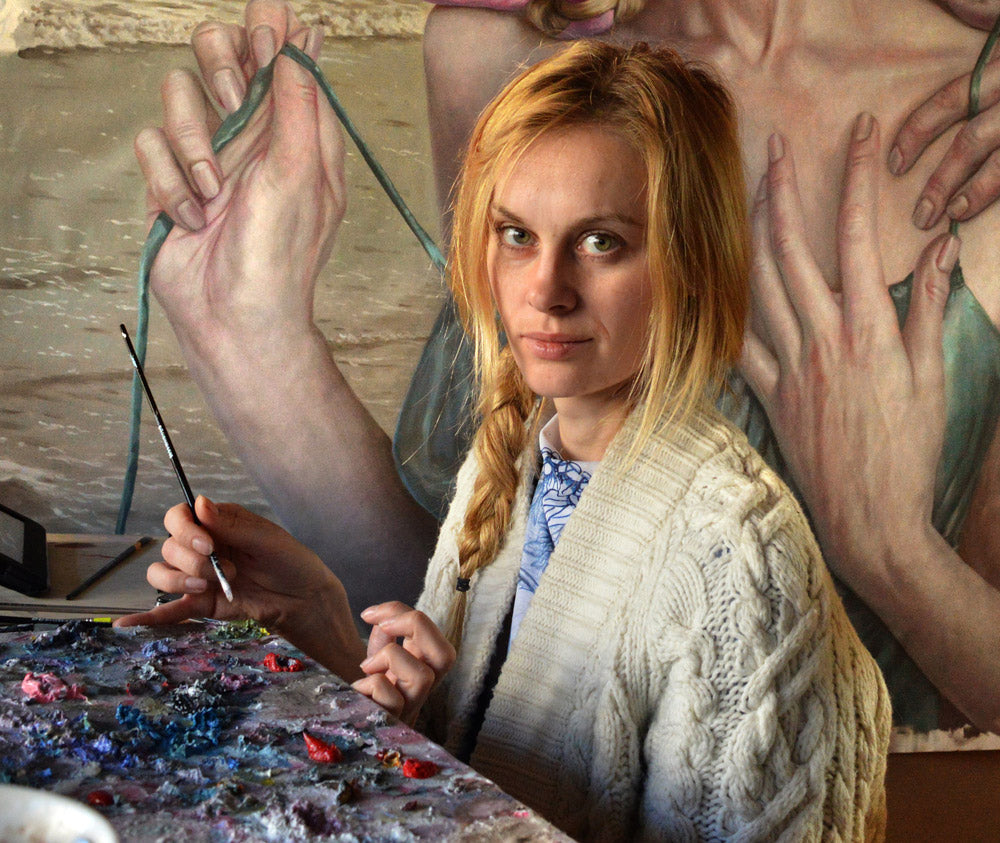
Jana Brike with one of her paintings.
Followers vs Engagement
One of the most common things I hear about an artist’s social media account is how big their following may be. This also comes up when artists talk about Instagram, for example, not allowing all of their followers to see what they post. While it’s true that it’s harder than ever to get as many of your followers to see your posts as it used to be, there are a few reasons for this that I feel we should talk about first.
When Instagram was first taking off, having a high number of likes/comments in relation to your following wasn’t that hard to achieve, and it worked similarly to artist pages on Facebook. The growth was amazing, and this was also the time when many artists were able to truly take their art careers into their own hands. This was also around the time when Instagram’s feed was chronological.
Now I'm going to say something a bit controversial: the chronological feed (no matter how great it was) would not work with the way Instagram has grown. The simple fact is that Instagram has changed too much. More companies have profiles now, there are more ads, users follow more accounts than they previously did, and users are logging into the app less than they previously did. According to the latest stats; 95+ million posts are uploaded daily, 500 million stories are used daily, and users under 25 use the app 32 minutes per day, while users 25 and older use it for 24 minutes per day on average. The amount of imagery to sift through is just too large to see in a chronological manner. Users would need to spend hours a day to see your posts in the feed. It would be a constant fight to figure out the best time to post based on the location of your followers, and how do you even figure this out with the whole world using social media now? This is why the algorithm, with all its faults, is a solution to this issue (gnashed-teeth solution at best).
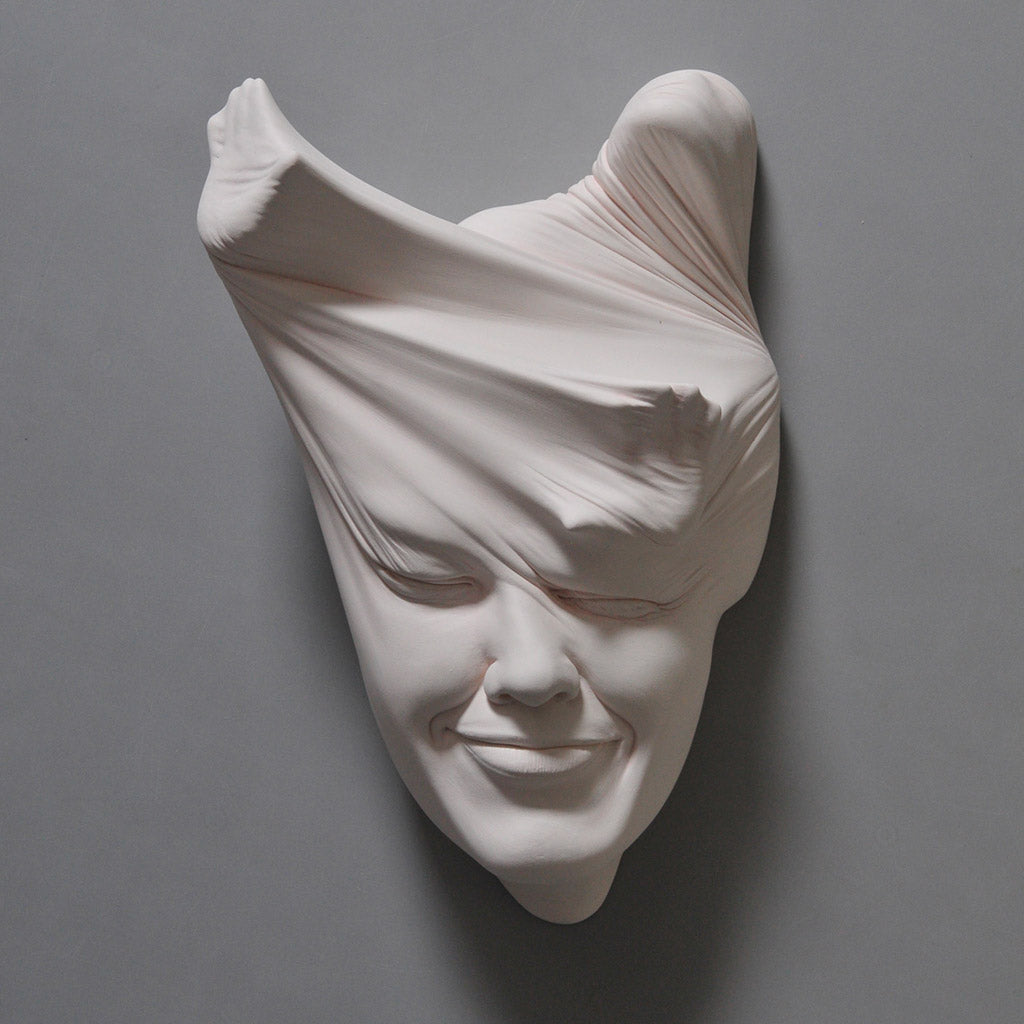
Under The Skin - Porcelain sculpture by Johnson Tsang.
The trick is learning how to work with the algorithm on social media as opposed to fighting against it. While it used to be easier to get likes/comments even if you uploaded a photo of your brunch or cat, or your cat eating brunch, it’s now the posts that are the most compelling that get all the attention. If you’re lucky, maybe it’s your brunch-eating-cat pics that work for you. I’ve heard this referred to as a popularity contest, but this idea is really not that uncommon. Neither music, art, films, nor even restaurants have ever been on an even playing field. The ones that are consistent, cohesive, and not just “phoning it in” will do the best. I know that to an artist, marketing can often feel like taking nasty medicine, but it’s the ones who use social media to its fullest—have fun while doing it—who will see their efforts rewarded.
The last bit is about the follower counts. Whether you have 5,000 or 500,000 followers, not all followings are the same. Many of your followers might not log in often, many may have abandoned the platform altogether, and many may have curated their feeds with their likes/comments to show them posts that just might not include what you’re sharing. I know it may feel like a big gesture to follow an account, but it’s really just the click of a button. This is why it’s important to focus on the followers that are going out of their way to like, comment, and make sure they see what you post. Basically, don’t waste time struggling to get that following number larger when that time could be used to cultivate and strengthen relationships with the followers that are right in front of you. Quality not quantity, as they say.
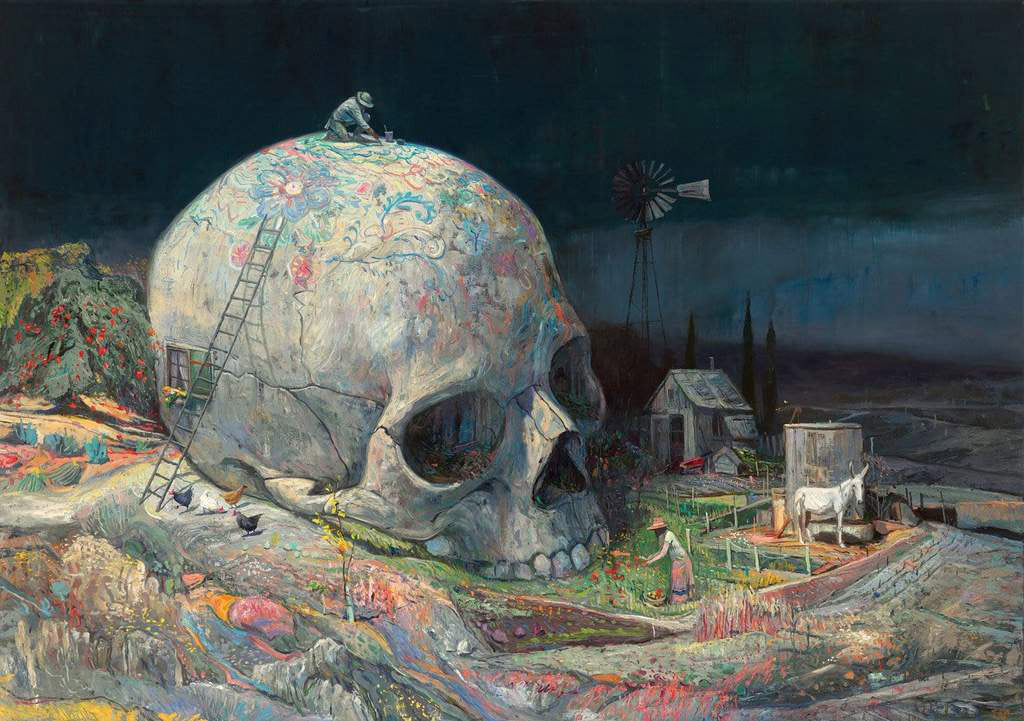
All We Ever Wanted - Oil painting by Shaun Tan.
All About the Content
Ok, now on to the good stuff. Whether it’s Facebook, Instagram, Pinterest, Twitter, or Tumblr, content is king. I firmly believe there’s an audience for everyone; the trick is finding that audience and creating a community for them. It’s great stories, imagery, and iconography that lay the groundwork for a passionate fanbase. Keep this in mind whenever you make a new post. Make sure every image and video you post is crisp and clear and represents the content well. If it doesn’t contribute to the story you’re trying to share, it’s not worth sharing. Engaging posts are also more likely to be liked, commented on, shared, and have fans tags their friends in the comments. I know it may feel like a struggle to post daily when you might not have new work to share, but this doesn’t mean you should share something just for the sake of sharing.
As an artist you’re loaded with great imagery to share. Finished works, gallery shows, studio shots, images of works-in-progress (fans love these), varnishing videos, sketches, life drawing events, collaborations, ask-me-anything posts, technique and tip posts, and on and on. There’s always something to share, as long as it’s relevant to you and your story as an artist.
Joshua Smith with one of his miniatures. Photo by Andrew Beveridge.
Selfies and Off-Topic Imagery
One of the complaints I hear frequently is, “Every time I post a pic of my face (or animal companion), I lose followers.” This can be confusing, as you want to share parts of your life and other artists may have great success with this, but your selfies and pet posts aren’t doing well when you share them. This goes back to that idea that not all followings are the same, and for some followers these types of posts may look out of place and won’t come across as contributing positively to the story you’re telling. Honestly, consider it a good thing that your followers may want to see more of your art than anything else. In the context of the average follower (especially new ones), off-topic posts in your feed may seem as out of place as a musician sharing a pic during their latest dental appointment. A follower may think, “Okay, cool, but why am I looking at this, and what does it have to do with your music?” Now, if you want your selfies and pet pics to be a part of your overall story, then make sure they’re connected to that overall story, stylised and filtered in a similar manner, and easily recognisable as your content. I suggest looking at profiles that pull this off well and analyse what they’re doing. I don’t want to discourage sharing more personal parts of your life if that’s what you want to do, but in order to make sure the images make sense to your current and new fans, these types of photos will need to be run through the same pre-post check that all your images should be run through. Ask yourself questions like the following. 1. Am I happy with the quality and content of this image? 2. Does it contribute positively to the story I am trying to tell? 3. Does this image encourage interaction? Each image doesn’t have to check off all of your points, but the more, the better.
WIP Pencil drawing by Miles Johnston.
Videos, Slideshows, and Stories
For Facebook and Instagram especially, posting videos can be a great way to give your feed some more life and variety. Videos allow your fans an opportunity to see your working process, get behind-the-scenes looks at how you varnish a painting, or even see the opening night of your latest solo show. For those artists that create 3-dimensional art, videos can offer fans a view of the artwork that’s more representational than a still photo would be. The main considerations for videos are that they should be crisp and clear (use a tripod if needed), that they don’t have too much downtime (as allowed video time is short), and that each video gets right to the point when a fan clicks “play.” One way to entice fans into viewing a video is to make sure that the cover photo for the video is engaging and relevant. If your video is about a new painting you made, show the best still of the painting for that cover photo. Don’t worry too much about giving away the best part of the video in the cover photo, as it may be the one thing that encourages them to watch it. (For Instagram, changing the cover photo is done right before posting.)
Stories, first seen on apps like Snapchat, are now widely used on Facebook and Instagram. They’re a great way to quickly share something with your fans and can often take the place of something you would otherwise have shared in a normal post. Time-sensitive events like shows, auctions, gallery walkthroughs, and Q&A sessions are all perfect story material. Too often I see artists using stories to share imagery they wouldn't share on their normal feed (pets, food, memes, etc.), but this is a missed opportunity. Stories don’t work the same way regular posts do, and if you have 10,000 followers or more on Instagram, stories allow you to link directly to whatever you want, such as a new print release. Think of stories as another tool at your disposal, one that’s quick and not subject to the non-chronological feed (on Instagram).
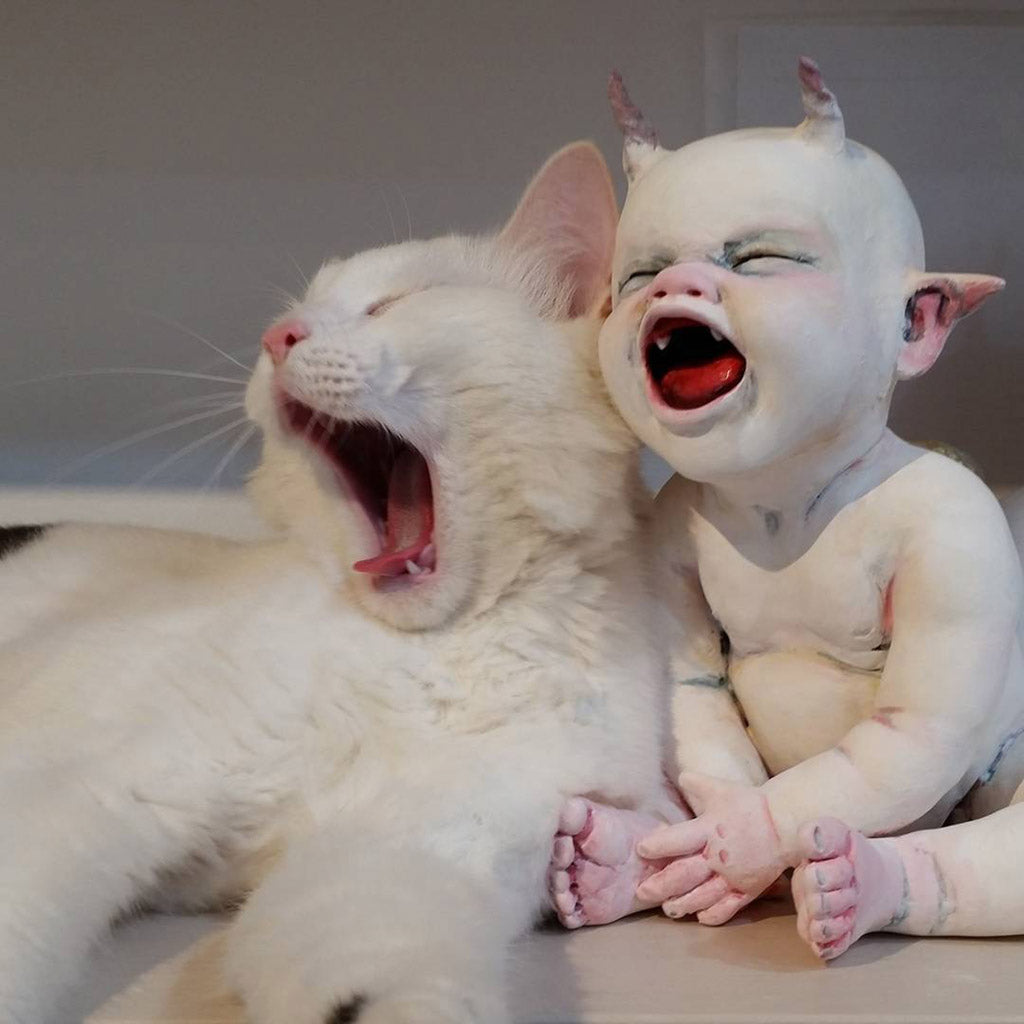
Ceramic sculpture by Ronit Baranga and her cat, Louie.
On most social media platforms, like Facebook, Twitter, or Tumblr, you can post multiple images in a gallery style format, but on Instagram multiple-image posts are presented in slideshows. The power of slideshows is that you can use them to showcase your products in a more compelling way. I’m sure most of you reading this have shared a print you have for sale and that post not getting many likes or comments. Well, it seems like a lot of social media followers treat most product posts like any other. Maybe it’s marketing fatigue; who knows? To try and combat this, create a slideshow and share a close-up and compelling shot of your print first, and then in the consecutive slideshow images show more details leading up to the last image of the full print. Fans that are likely to be interested in buying a print are most likely the same fans that will take the time to swipe through your full slideshows. Remember, just like the cover photo for videos, the first image in a slideshow should grab their attention. This idea is also helpful when it comes to work-in-progress shots. I see many artists creating multiple posts of the same work with just a little bit of progress each time. Instead, share those step by steps in a story and then post a slideshow with the finished work first and a few work-in-progress shots on the following slides.
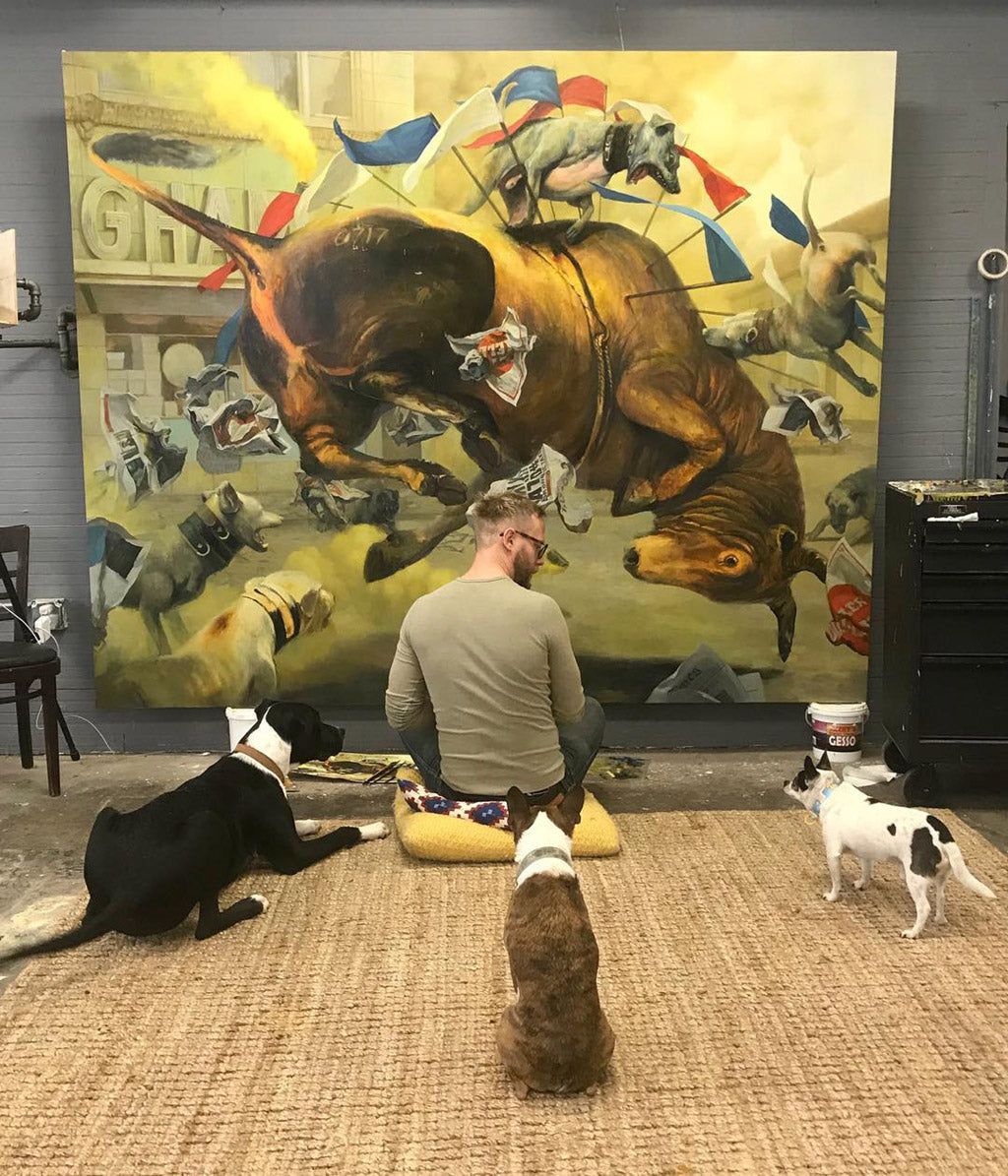
Martin Wittfooth painting in his studio with his dogs.
Creating Scenes for Your Artwork
As I mentioned earlier, social media has some downsides. Posts being shared without credit and outright theft are major drawbacks. One clever way to help combat this, and create a nice overall feel for your feed, is to create scenes for your works. Instead of showing the art perfectly cropped and print-ready, set up a little scene to photograph instead. This way you can share prints, enamel pins, sketchbooks, and more and give your feed a unique touch while protecting your work at the same time. Here’s an example post from Medusa Dollmaker. In this image she shares her latest sketch, fills the scene with items that are relevant to her and her work, and notice that business card? What a great way to watermark your art post without a big garish standard-looking watermark. It’s a compelling image, still showcases the drawing, and would be hard to steal to sell as a knockoff, and if someone shares it without credit, her name is right there in a place that’s hard to crop out. Fancy-looking images and security in one go.
Vanitas No.1 - Oil painting by Beau White.
Hashtags
Effective use of hashtags is one of the biggest contributing factors to your posts being found by others. When people see a post they like, hashtags are a great way to find similar content and stumble upon new things. There’s this idea that using as many hashtags as you can is the best way to go; however, research has shown that the magic number is 11. Thank you, Nigel Tufnel. The maximum for Instagram is 30, but at that point I think the likelihood of using irrelevant tags goes up.
So, which hashtags to use? Generally, I see artists using the most popular hashtags they can, and this would seem like a good idea, as these popular tags are where people are looking for art, right? Well, as it turns out, using the most popular tags is a lot like yelling your name at a music festival and wondering why no one knows who you are. There’re just too many results, so your work disappears fast. #art, for example, has over 500 million results, and the popular #artistsoninstagram has over 20 million. Ideally, you should use a mixture of hashtags in the hundreds of thousands, thousands, and even a few in the hundreds. Use them as if you’re trying to shine a laser pointer on your fans that were at that music festival. So, if you create surreal art, use #surrealartwork (19,000 results), but then also what medium you use, e.g., #oilpainting, #oilpaints, #oilsoncanvas.
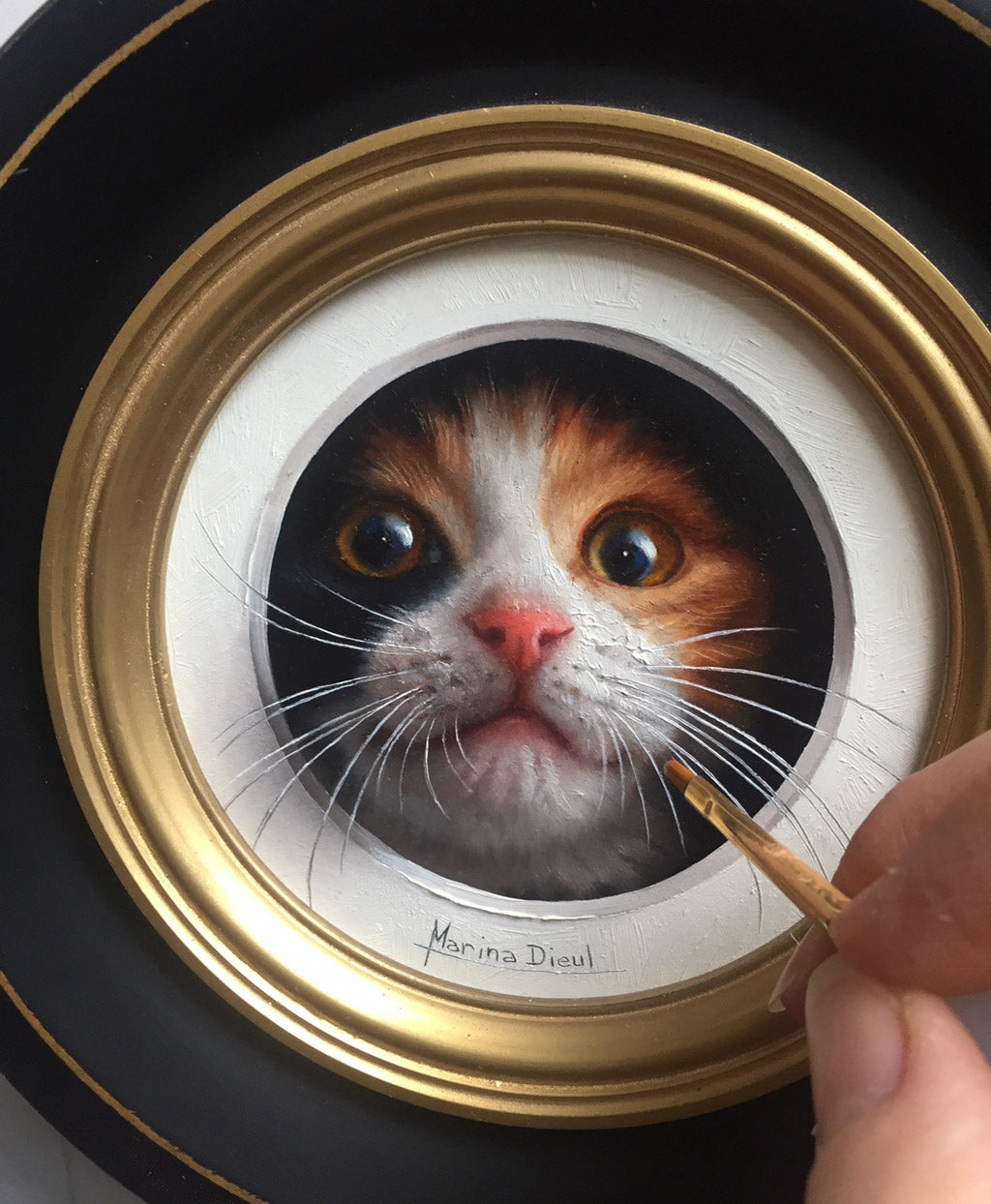
The idea here is that you’re trying to connect with those anonymous users that just so happen to be looking for art in your style, medium, or location (#australianart). Relevant tags are always the way to go. There’s nothing worse for users than hashtag hijacking: looking for portrait art and finding a bunch of images of sunsets. WTF?
You can also create your own hashtags. Let’s say no one has ever used #burritopainting. I can decide to start using it because I want to own that tag. Others might start using it as well, and now you’re in the mix of people using this newly popular tag.
Always make it a point to switch up your tags. Keep them fresh, and don’t just copy and paste the same block of tags over and over for each post: this can be seen as spamming, and you might end up teaching the algorithms to work against you.
Snake Gardener with Orrery - Oil painting by Adrian Cox.
Scheduling
Consistency is key, as they say, and with posting this is very important. With the algorithms mentioned above, well-performing profiles will be seen more often by more fans. You don’t need to post like crazy, but you also don’t want to skip too much time without making a post. When I first started I posted every 4 hours, but now I post about 1 or 2 times per day. Monitor your engagement (likes, comments, and shares) and see how long a post has been up before it starts to slow down. This will give you an idea of what your personal frequency should be. It could be every 4 hours, maybe every 8 hours, or it might even work with your profile to post every other day or so. The idea is to not post images too close to each other in time, as this might negatively impact the engagement of the first or second post.m You want time for that one post to get a good amount of engagement. I like to think of it as letting the post simmer a while. If a post is really getting a lot of engagement I will let it simmer even longer, and the opposite is true with poorly performing posts. If I post something that’s not doing well at all, within a reasonable time frame, I post another image I feel will boost my overall engagement back up. I’ll write more on this below. Also keep in mind that if you do want to schedule posts related to timed contests, they won’t work the same anymore, as the feed is not chronological: your fans may see posts that look new but are really 14+ hours old. I’ve missed a lot of contests this way; use stories instead.
With Instagram's latest update it is now possible for fans to mute your profile without unfollowing you, just like Facebook allows. Not only does this mean your total number of followers is even less relevant, but it also means that posting too frequently could result in you being muted by a bunch of your followers. Let those posts simmer..
The easiest way to monitor your posts, and get them all scheduled, is to use a third-party app. The one I use most is Buffer, but Later App works as well. You schedule your posts from the desktop admin panel, or mobile app, and then you can send the posts to your Instagram account like magic. Direct posting. The free version of the app lets you connect to one account, and you get multiple free posts per day, so the free account is good for each month.
Finally, if you’re using Instagram and have a business account, you can see the analytics of your account: where your followers are, how many fans you’ve gained in the last week, and what the best times to post are. Pay attention to this and try to follow it as best you can. It will change over time, but this is a good way to predict when your post will do the best.
Primate Directive - Oil painting by Chris Leib.
Booster Images
I’m sure everyone reading this has seen this scenario roll out: you post an image and it doesn’t do that well, so you post another one, and that one doesn’t do well. Now, what do you do? Post more, post less, freak out? Surely these poorly performing posts will make it even harder for your posts to be seen, right?
In the beginning of building my profile, I noticed that some images I posted did well, and they did well each time I posted them. Was it the artist, or the content, or the theme? So I tested this, and turns out it’s a mixture of all of these. The important lesson I learned was that some types of images do better at first than others, and they generally continue to do so. So whenever I had a string of posts that didn’t do well, I would post one of these “booster images,” as I began calling them: images that were highly likely to get my fanbase excited again and liking and commenting like crazy. These images are like adrenaline shots for your profile, but just like being jabbed with a needle, you shouldn't do it too often. You don’t want to use the same images over and over and too frequently. I’m a big fan for sharing images more than once— you’re an artist, after all, and your art is worth sharing multiple times—but you want to use booster images sparingly. You may be asking, why not post all booster type images all the time? I mean, if they work, why not go crazy? Well, there’s a possibility your fans will get used to them, become desensitised, and expect them to be there, and you’ll then have nothing to fall back on when things are slow.
Look back at your feed and see what works. Your fans are telling you with their likes and comments what they like. So, if your selfies don’t do well, looking at multiple selfie posts will clearly show you this. Scan through and look for your booster images. Maybe it’s a shot of your studio, a work in progress shot, or even a pic of your cat next to your brushes. These are your booster images, and they should vary as well. Don’t always use the same cat-next-to-brushes pics: switch them up. Booster images are also great for ideation. Maybe that cat is now staring at a clay sculpture of itself. Have fun, and remember that these images are first and foremost the types of images that are truly telling your story as an artist in the loudest voice possible.
The Sea - Oil paintings by Scott Listfield.
Conclusion
I hope this article helps and makes the promotional craziness known as social media a bit more fun sounding. It’s a lot of work for sure, but in my opinion, it’s one of the most exciting things to happen to the art world for a long time. Fans get to see art being made, see art shows in other parts of the world, and see street art that was removed days later but now lives on in images or videos. Most importantly, social media allows you to at least take control of your future a bit more and connect with fans all over the world. Hopefully these tips will help you, but remember that they are not a silver bullet. Every account and following is different, and you will need to experiment and see what works best for you. Test, keep track of what works, and more forward.
The last bit I want to leave you with is this: enjoy social media, but don’t rely on it as your sole method for getting your art into the world. Use stories to send fans to a mailing list, use a service like Linktree (free, by the way) to add multiple clickable links to your Instagram profile, and have your own website. I know it feels like home pages are a thing of the past, but your own website is your home base. It’s a place to store your work, archive it all (social media is rubbish at that), show off your interviews and gallery shows, and much more. A website also shows you’re serious, and looks a lot more professional than using your social media profile as your home base. Social media is kind of ephemeral in a way, as few fans are going to scroll back very far to see everything you’ve posted. Relying solely on social media puts you at the whim of the companies that run these platforms. Besides, making your art as easy to find as possible, it helps folks like me that just want to see it all and share it all.
Softspot - Sculpture by Chet Zar.
This article was written by Josh G from Creep Machine in August 2019. It was inspired by a recent interview with Josh on Chet Zar's Dark Art Society Podcast.
Josh G works in social media and marketing during the day, and in his free time is an art historian with a focus on lowbrow, pop surrealism, and dark art. He started the Creep Machine art site in 2007, has curated a handful of shows, and is dedicated to empowering artists with technology.




 Cart
Cart


